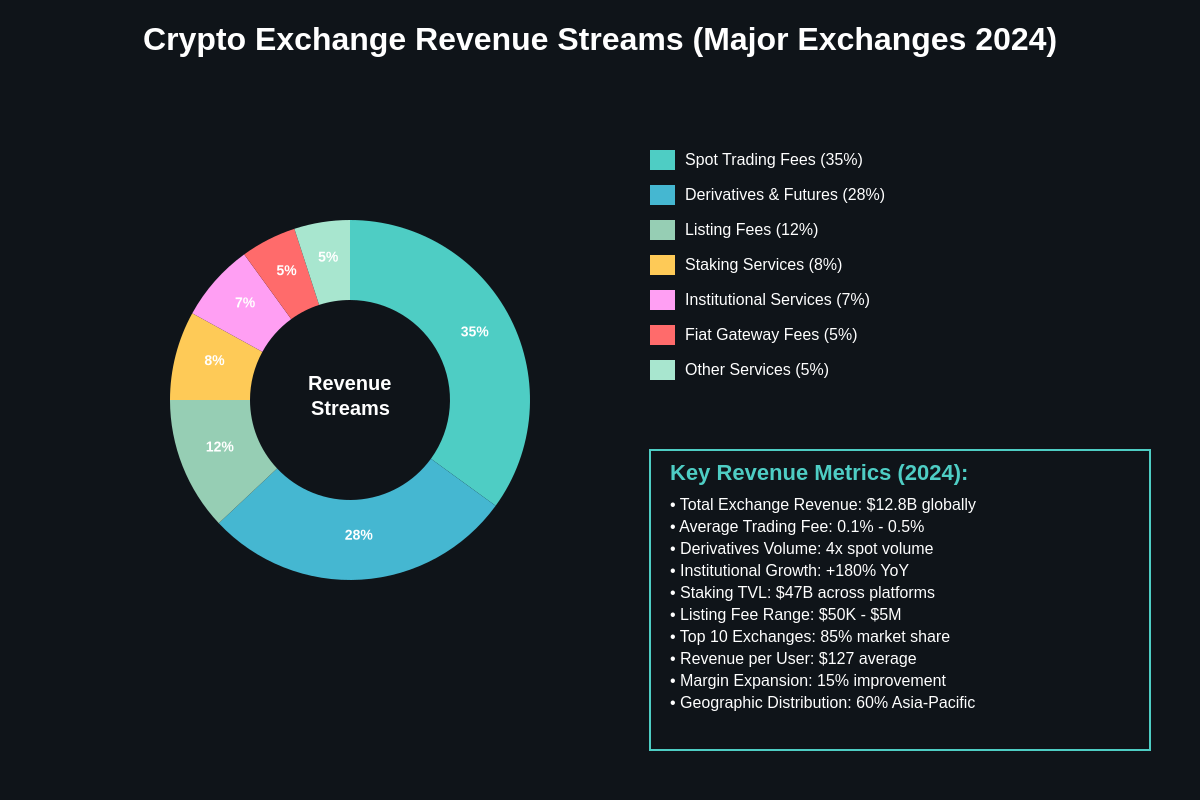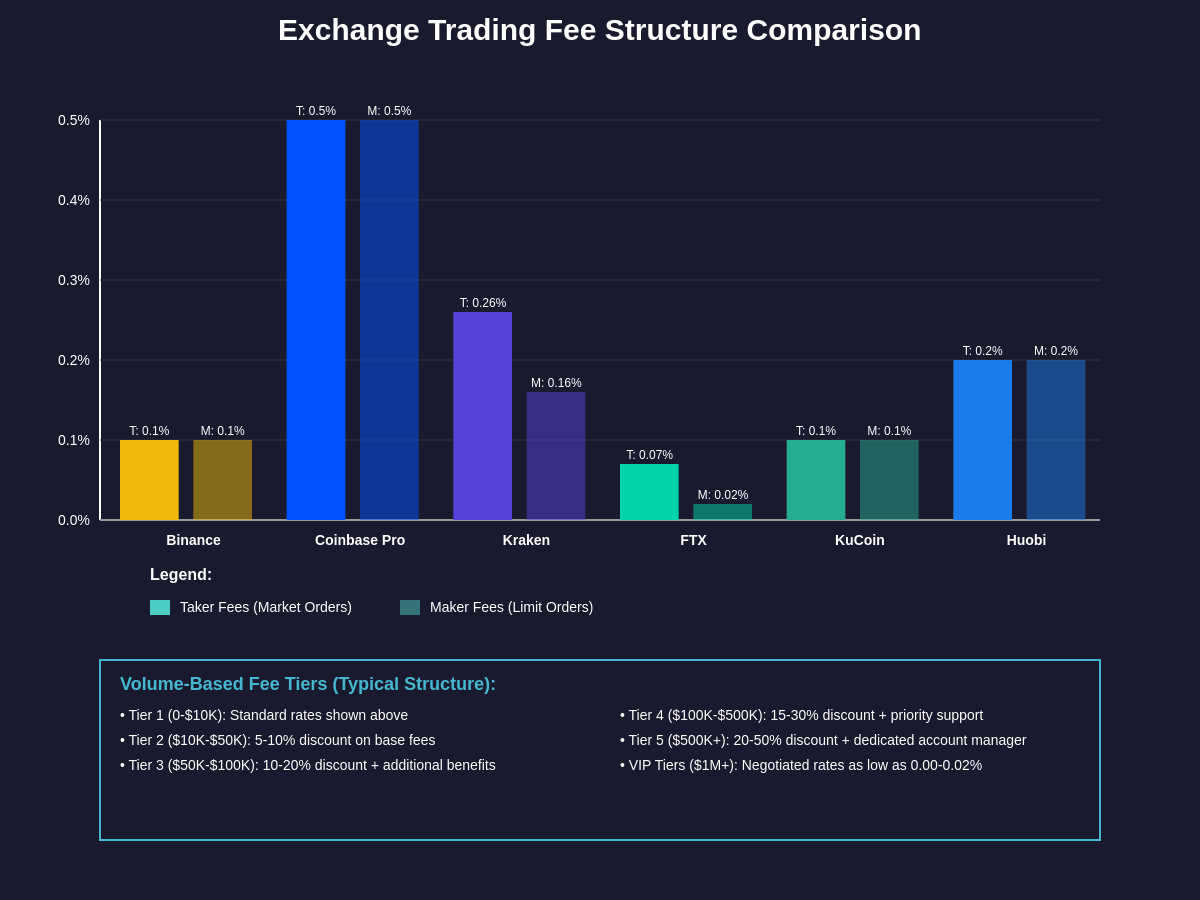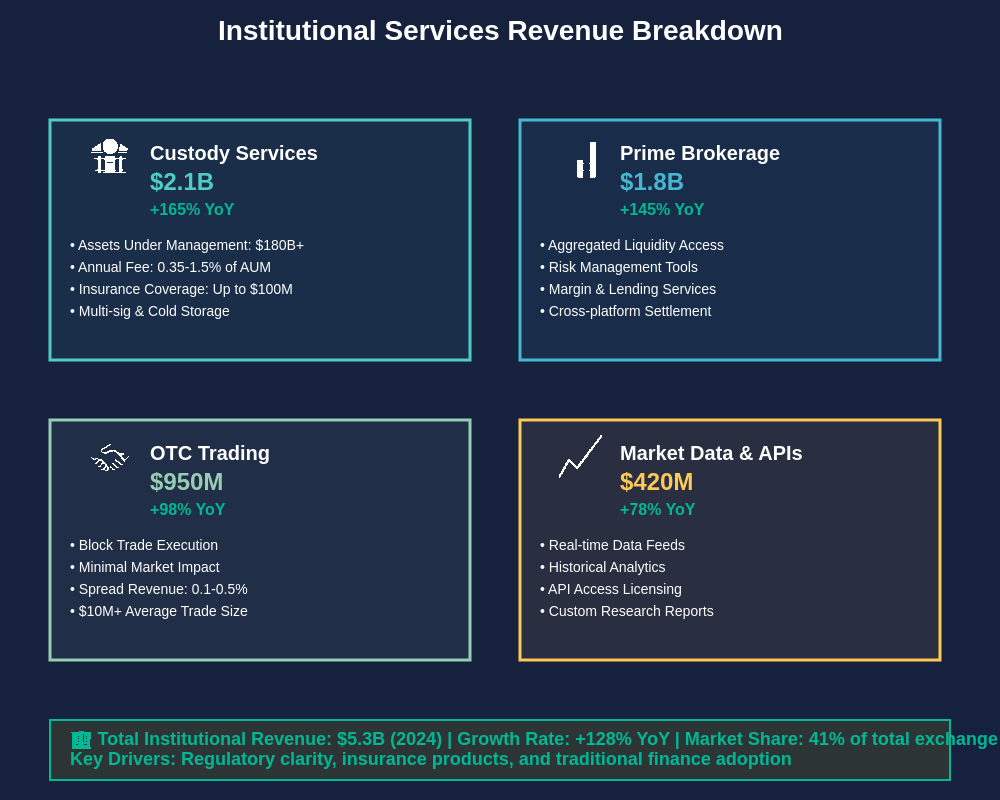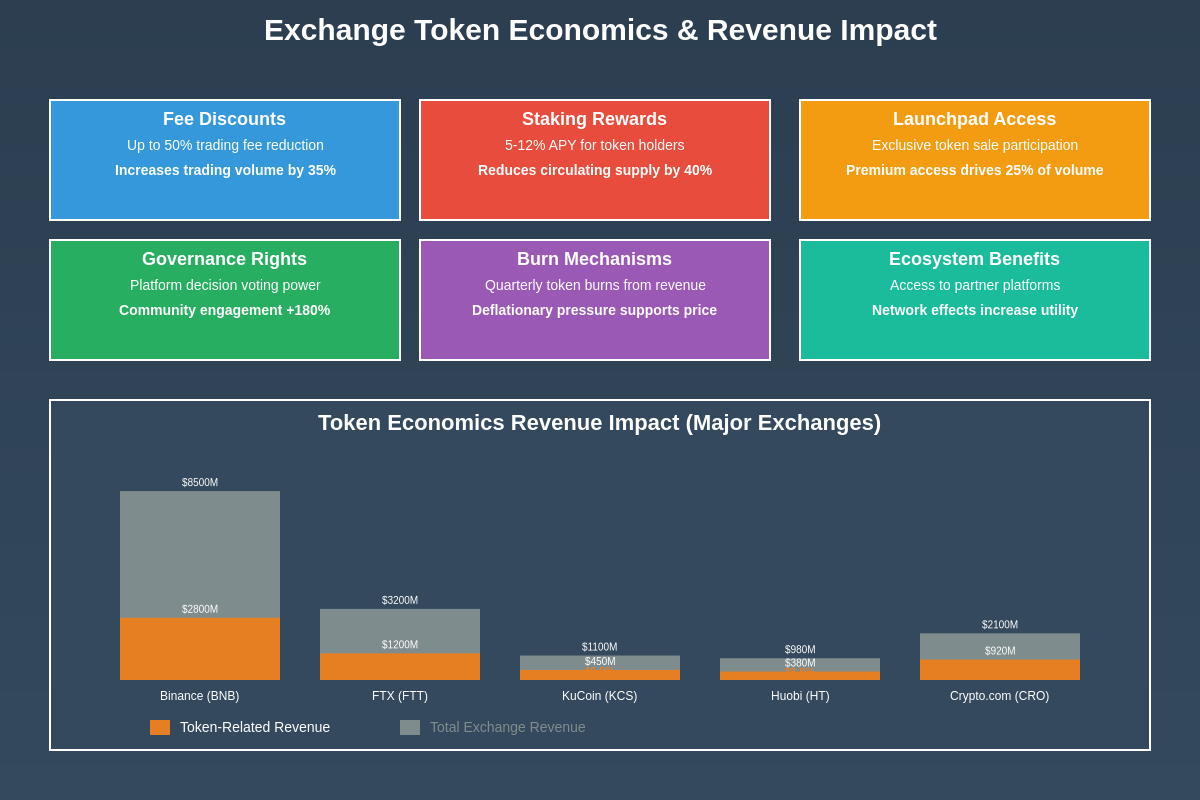Explore advanced trading strategies and analytics tools on TradingView to maximize your cryptocurrency trading potential.
The Business Economics of Cryptocurrency Exchanges
Cryptocurrency exchanges have emerged as some of the most profitable businesses in the digital asset ecosystem, generating billions of dollars in revenue through diverse monetization strategies that capitalize on the growing demand for cryptocurrency trading and investment services. Understanding how these platforms generate revenue provides crucial insights into the economics of the cryptocurrency industry and the competitive dynamics that shape market structure, pricing strategies, and service offerings across different types of exchange platforms.
The revenue models employed by cryptocurrency exchanges have evolved significantly from the early days of simple spot trading fees to sophisticated multi-revenue-stream businesses that encompass everything from derivatives trading and staking services to institutional custody solutions and blockchain infrastructure services. This evolution reflects both the maturation of the cryptocurrency market and the increasing sophistication of exchange operators in developing sustainable and scalable business models.
Modern cryptocurrency exchanges operate as complex financial technology platforms that serve multiple customer segments including retail traders, institutional investors, market makers, and blockchain projects, each requiring different services and generating revenue through different mechanisms. The most successful exchanges have developed comprehensive ecosystems that capture value at multiple points in the customer journey, creating network effects and switching costs that enhance long-term profitability and competitive positioning.

Trading Fee Structures and Market Making Revenue
Trading fees represent the foundational revenue stream for virtually all cryptocurrency exchanges, typically structured as a percentage of transaction volume with variations based on user tiers, trading pairs, and market conditions. Most exchanges employ a maker-taker fee model where market makers who provide liquidity by placing limit orders receive lower fees or even rebates, while market takers who remove liquidity through market orders pay higher fees, creating incentives for users to provide liquidity and improve market depth.
The specific fee structures vary significantly across exchanges, with tier-based systems offering reduced fees for high-volume traders and VIP customers, creating revenue optimization opportunities through customer segmentation and retention strategies. Major exchanges like Binance and Coinbase implement sophisticated fee structures that balance competitive pricing with revenue maximization, often offering significant discounts for users who hold the exchange’s native tokens or meet certain trading volume thresholds.

Beyond direct trading fees, many exchanges generate additional revenue through market making operations where they act as liquidity providers in their own markets, capturing bid-ask spreads while facilitating trading for their users. This dual role as both exchange operator and market participant can create substantial revenue opportunities, particularly in volatile market conditions where spreads widen and trading volumes increase dramatically.
The revenue impact of trading fees depends heavily on market conditions, with bull markets typically generating significantly higher trading volumes and fee revenue compared to bear markets, creating cyclical revenue patterns that exchanges must manage through diversification strategies and cost optimization initiatives. Successful exchanges develop predictable revenue streams that are less dependent on market volatility through subscription services, fixed-fee products, and recurring revenue models.
Derivatives and Leveraged Products Revenue
Derivatives trading has become an increasingly important revenue source for cryptocurrency exchanges, offering higher margins and more sophisticated trading products that appeal to professional traders and institutional customers. Futures contracts, perpetual swaps, and options trading generate revenue through trading fees, funding rate mechanisms, and liquidation fees, often producing significantly higher revenue per user compared to spot trading.
Perpetual swap contracts, which allow traders to maintain leveraged positions indefinitely, generate continuous revenue through funding rate payments between long and short positions, creating a revenue stream that persists even when trading volumes are low. The funding rate mechanism ensures that the perpetual contract price stays close to the underlying spot price while generating fees for the exchange that facilitates these payments between traders.
Liquidation fees represent another significant revenue source from derivatives trading, charged when leveraged positions are automatically closed due to insufficient margin, with exchanges typically collecting a percentage of the liquidated position size. These fees can be substantial during periods of high volatility when large numbers of leveraged positions are liquidated simultaneously, creating revenue spikes that can significantly impact quarterly earnings.
The risk management requirements for derivatives trading create additional revenue opportunities through insurance fund contributions, where a portion of trading fees is allocated to an insurance fund that covers potential losses from liquidations, with excess insurance fund assets sometimes distributed to the exchange or used to buy back native tokens.
Listing Fees and Token Launch Services
Cryptocurrency exchanges generate substantial revenue through listing fees charged to blockchain projects seeking to have their tokens traded on the platform, with listing fees ranging from tens of thousands to millions of dollars depending on the exchange’s tier and the project’s profile. These fees reflect the value that exchanges provide through market access, liquidity, and credibility, particularly for newer projects seeking to establish trading presence and price discovery mechanisms.
The listing process often involves comprehensive due diligence procedures, technical integration work, and ongoing support services that justify the fees charged, while also providing exchanges with deal flow visibility and early access to promising projects that may become significant revenue generators. Some exchanges have developed tiered listing programs that offer different levels of service and exposure based on the fees paid, creating opportunities for revenue optimization through service differentiation.
Initial Exchange Offerings (IEOs) and launch pad services represent an evolution of the listing fee model, where exchanges provide comprehensive token launch services including fundraising, marketing, and technical support in exchange for substantial fees and often equity stakes in the launching projects. These services can generate millions of dollars in revenue per launch while also creating ongoing trading volume and fee revenue from the launched tokens.
The regulatory environment around token listings has become increasingly complex, with exchanges investing heavily in compliance and legal frameworks to support listing services, creating both costs and competitive moats that can justify premium pricing for listing services. Exchanges with strong regulatory positioning and compliance track records can command higher listing fees and attract higher-quality projects.
Staking and Yield Generation Services
Proof-of-stake blockchain networks have created new revenue opportunities for exchanges through staking services that allow users to earn rewards on their cryptocurrency holdings while the exchange captures a portion of the staking rewards as service fees. These services typically involve the exchange operating validator nodes on behalf of users and charging management fees ranging from 5% to 25% of the staking rewards earned.
Liquid staking services, which provide users with tradeable tokens representing their staked assets, create additional revenue streams through the issuance and management of derivative tokens while allowing users to maintain liquidity on their staked holdings. The complexity of liquid staking operations and the technical expertise required create competitive advantages for exchanges that can successfully implement these services.
DeFi yield farming opportunities analyzed on TradingView show how exchanges can generate revenue by aggregating yield opportunities across multiple protocols and charging management fees for automated yield optimization strategies. These services appeal to users who want exposure to DeFi yields without the complexity of directly interacting with multiple protocols.
Lending and borrowing services allow exchanges to generate revenue through interest rate spreads, charging borrowers higher rates than they pay to lenders while managing the associated credit and liquidity risks. The growth of institutional cryptocurrency adoption has created substantial demand for these services, with exchanges competing to offer competitive rates and sophisticated risk management capabilities.
Institutional Services and Custody Revenue
The growth of institutional cryptocurrency adoption has created substantial revenue opportunities for exchanges through specialized services including custody solutions, prime brokerage, and institutional trading platforms. Custody services typically charge annual fees based on assets under management, creating recurring revenue streams that are less dependent on trading volumes and market volatility.
Prime brokerage services generate revenue through various fee structures including account management fees, lending spreads, and trading commissions, while providing institutional clients with consolidated access to multiple liquidity sources and sophisticated risk management tools. These services often command premium pricing due to the specialized infrastructure and regulatory compliance required to serve institutional customers.
Over-the-counter (OTC) trading desks operated by exchanges generate revenue through bid-ask spreads and service fees while facilitating large-volume transactions that might otherwise impact market prices if executed through regular order books. OTC services require sophisticated inventory management and risk controls but can generate substantial revenue per transaction, particularly for very large trades.

Institutional custody solutions must meet stringent security and regulatory requirements including insurance coverage, segregated storage, and audit compliance, creating high barriers to entry that allow successful providers to command premium pricing for their services. The total addressable market for institutional cryptocurrency services continues to expand as more traditional financial institutions enter the cryptocurrency market.
Exchange Token Economics and Native Cryptocurrency Revenue
Many exchanges have launched native cryptocurrencies that serve multiple functions within their ecosystems while generating revenue through various mechanisms including transaction fees, token burns, and ecosystem development initiatives. Exchange tokens typically offer holders benefits such as reduced trading fees, priority access to new services, and governance rights, creating utility that drives demand and token value appreciation.
Token burn mechanisms, where exchanges use a portion of their revenue to permanently remove tokens from circulation, create deflationary pressure that can support token prices while effectively distributing value to token holders. The transparency and predictability of burn programs provide marketing benefits and community engagement opportunities that can enhance user loyalty and platform adoption.
Launchpad services and token sales conducted through exchange platforms generate revenue through participation fees and often involve the use of native tokens for allocation eligibility, creating additional demand for exchange tokens. These programs can generate substantial revenue while also strengthening the exchange ecosystem and community engagement.
The development of comprehensive blockchain ecosystems around exchange tokens, including smart contract platforms, decentralized applications, and cross-chain infrastructure, creates multiple revenue streams and value capture mechanisms that extend beyond traditional exchange operations. These ecosystem development initiatives require substantial investment but can create significant competitive advantages and long-term value creation opportunities.

Payment Processing and Fiat Gateway Revenue
Fiat-to-cryptocurrency conversion services generate revenue through various fee structures including deposit and withdrawal fees, foreign exchange spreads, and payment processing markups that reflect the complexity and cost of integrating with traditional banking systems. These services are essential for user onboarding and create opportunities for exchanges to capture value at the entry point of the cryptocurrency ecosystem.
Credit and debit card processing for cryptocurrency purchases typically involves higher fees than traditional payment processing due to the additional risk and regulatory complexity, allowing exchanges to generate substantial revenue from users who prioritize convenience over cost optimization. The integration with multiple payment service providers creates redundancy and optimization opportunities that can improve both user experience and revenue margins.
Cross-border payment services and remittance solutions represent growing revenue opportunities as exchanges leverage their cryptocurrency infrastructure to facilitate international money transfers at lower costs than traditional banking systems. These services can generate revenue through foreign exchange spreads and service fees while providing valuable functionality to users in markets with limited banking access.
The regulatory complexity of fiat gateway services creates competitive moats for exchanges that successfully navigate compliance requirements in multiple jurisdictions, allowing them to command premium pricing for services that require extensive legal and operational infrastructure. The ongoing evolution of central bank digital currencies and regulatory frameworks for cryptocurrency-fiat integration will likely create new revenue opportunities and competitive dynamics.
Data and Analytics Service Revenue
Cryptocurrency exchanges possess valuable market data and user behavior information that can be monetized through data licensing agreements, analytics services, and market intelligence products sold to institutional clients, researchers, and other market participants. Real-time and historical trading data, order book information, and market microstructure analytics command premium pricing from sophisticated users who require high-quality data for trading and research purposes.
API access fees for high-frequency trading firms and algorithmic traders generate recurring revenue while also creating switching costs that enhance customer retention. Different API tiers with varying rate limits, data refresh frequencies, and feature access allow exchanges to optimize pricing and serve different customer segments with appropriate service levels.
Market research and intelligence services that combine exchange data with external market information create additional revenue streams while establishing exchanges as thought leaders and authoritative sources of market insight. These services can support marketing objectives and business development initiatives while generating direct revenue from subscribers.
The development of sophisticated analytics platforms and trading tools that integrate exchange data with third-party information sources creates opportunities for software-as-a-service revenue models that complement traditional exchange operations. These value-added services can improve user engagement and retention while generating higher-margin revenue streams.
Regulatory Compliance and Future Revenue Evolution
The evolving regulatory landscape for cryptocurrency exchanges creates both challenges and opportunities for revenue generation, with compliance requirements driving consolidation toward exchanges that can successfully navigate complex regulatory frameworks while maintaining operational efficiency. Regulatory compliance capabilities become competitive advantages that can justify premium pricing and support market share growth in regulated markets.
The emergence of central bank digital currencies and traditional financial institution cryptocurrency adoption creates new revenue opportunities for exchanges that can successfully bridge traditional and digital asset ecosystems. Custody services, trading infrastructure, and regulatory expertise developed for cryptocurrency markets position exchanges to capture value from the broader digitization of financial services.
Environmental, social, and governance considerations are increasingly influencing exchange operations and revenue models, with sustainable blockchain technologies and carbon-neutral operations becoming potential sources of competitive differentiation and premium pricing. The integration of ESG considerations into exchange operations and token listing criteria may create new fee structures and service offerings.
The ongoing maturation of cryptocurrency markets and infrastructure will likely lead to further revenue model innovation, with exchanges continuing to expand beyond their traditional roles as trading platforms to become comprehensive financial service providers serving both retail and institutional customers across the entire cryptocurrency ecosystem.
Conclusion
Cryptocurrency exchanges have developed sophisticated multi-revenue-stream business models that capitalize on various aspects of the digital asset ecosystem, from basic trading services to complex institutional offerings and blockchain infrastructure services. The most successful exchanges have diversified their revenue sources to reduce dependence on trading volume volatility while building competitive moats through technical expertise, regulatory compliance, and ecosystem development.
The revenue potential of cryptocurrency exchanges continues to expand as the digital asset market matures and traditional financial institutions increase their cryptocurrency exposure, creating opportunities for exchanges that can successfully serve both retail and institutional customers with comprehensive service offerings. However, increasing competition and regulatory complexity require continuous innovation and investment in technology, compliance, and customer service to maintain competitive positioning and revenue growth.
Understanding the diverse revenue models employed by cryptocurrency exchanges provides valuable insights for investors, users, and industry participants seeking to evaluate exchange business models and competitive positioning in the rapidly evolving cryptocurrency ecosystem. As the market continues to mature, the most successful exchanges will likely be those that can effectively balance revenue optimization with user experience, regulatory compliance, and long-term ecosystem development.
Disclaimer: This article is for informational purposes only and does not constitute financial advice. Cryptocurrency trading involves significant risks, and past performance does not guarantee future results. Always conduct thorough research and consider consulting with qualified financial advisors before making investment decisions. The cryptocurrency market is highly volatile and regulatory environments continue to evolve, which may impact exchange operations and revenue models.